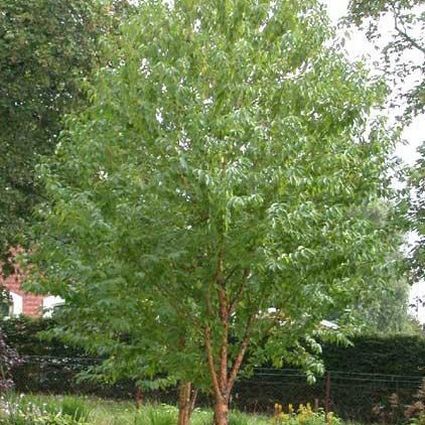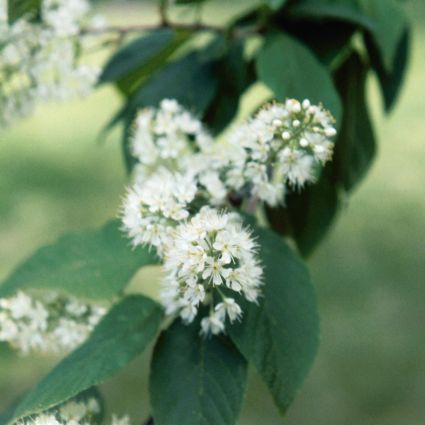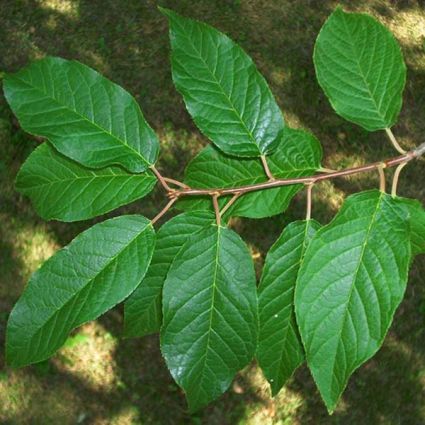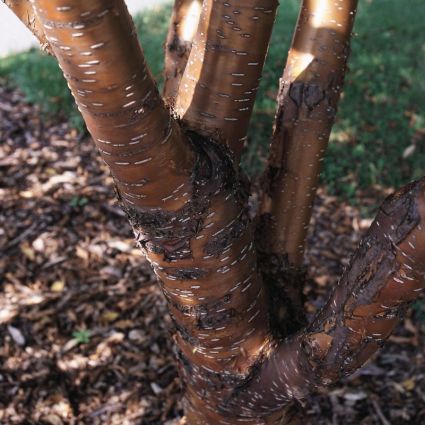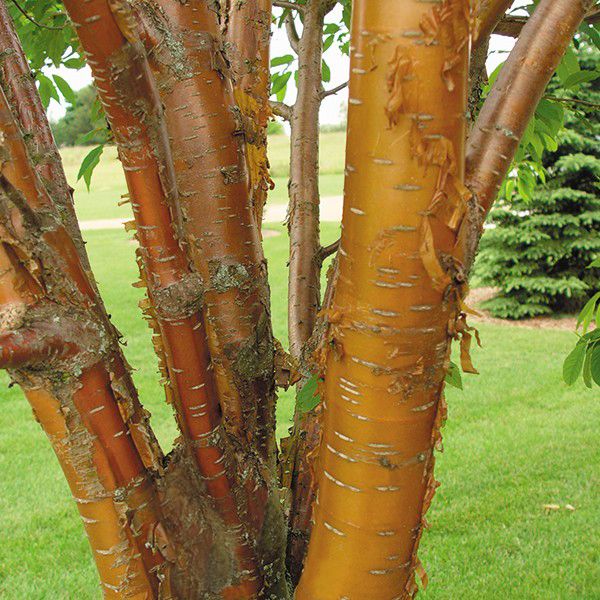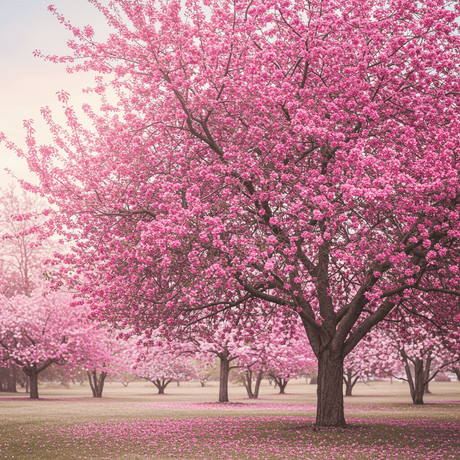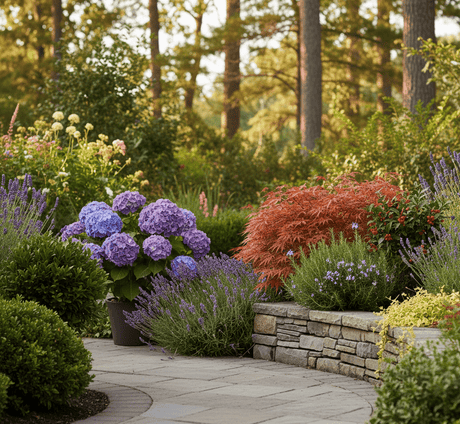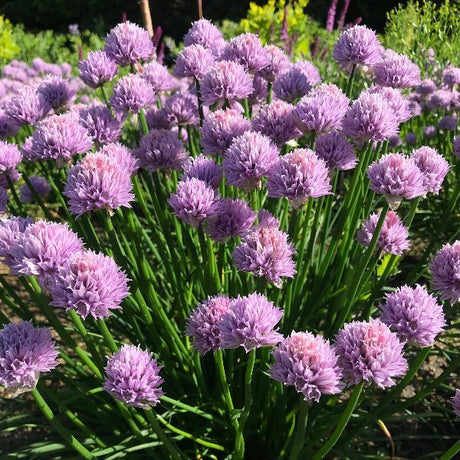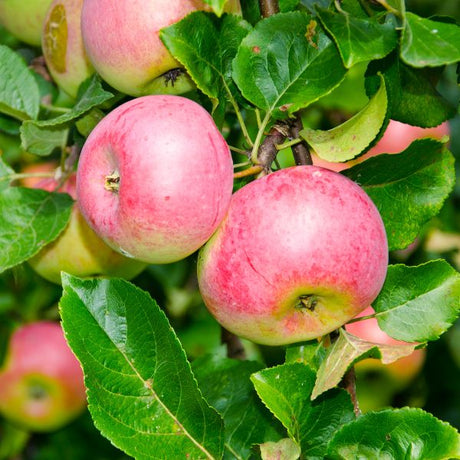Amur Chokecherry
Prunus maackii
- Stay Protected with Plant Sentry ™
Amur Chokecherry is backordered and will ship as soon as it is back in stock.
Plant Sentry™
Plant Sentry™

Plant Sentry™ Protected
Your order is protected by our compliance system that:
- Prevents restricted plants from shipping to your state
- Ensures plants meet your state's agricultural requirements
- Protects gardens from invasive pests and diseases
Delivery and Shipping
Delivery and Shipping
Delivery and Shipping
Fast, Safe Plant Delivery
Ships in 3-4 business days • Tracking provided • Weather protected
| Under $50 | $9.99 |
| $50 - $99.99 | $14.99 |
| $100 - $149.99 | $16.99 |
| $150 - $198.99 | $24.99 |
| $199+ | FREE |
✓ Zone-specific timing • ✓ Professional packaging • ✓ Health guarantee
Understanding Plant Options
Nature Hills offers plants in two main formats:
- Container Plants: Grown in pots with soil, sized by container volume and plant age
- Bare Root Plants: Dormant plants without soil, sized by height measurements
Container Plant Sizes
Container sizes indicate plant age and growing capacity rather than liquid volume equivalents. Our containers follow industry-standard nursery "trade gallon" specifications, which differ from standard liquid gallon measurements.
Young Plants (6 months to 18 months old)
| Container Size | Actual Volume | Metric Equivalent |
|---|---|---|
| 2" x 2" x 3" | 0.18 - 0.21 dry quarts | 0.20 - 0.23 dry liters |
| 4" Container | 0.31 - 0.87 dry quarts | 0.35 - 0.96 dry liters |
| 4.5" Container | 0.65 dry quarts | 0.72 dry liters |
| 6" Container | 1.4 dry quarts | 1.59 dry liters |
| 1 Quart | 1 dry quart | 1.1 dry liters |
| 5.5" Container | 1.89 dry quarts | 2.08 dry liters |
Established Plants (18 months to 2.5 years old)
| Container Size | Actual Volume | Metric Equivalent |
|---|---|---|
| 2 Quart | 2 dry quarts | 2.2 dry liters |
| #1 Container | 2.26 - 3.73 dry quarts | 2.49 - 4.11 dry liters |
| 5" x 5" x 12" | 3.5 - 4.3 dry quarts | 3.85 - 4.74 dry liters |
Mature Plants (2-4 years old)
| Container Size | Actual Volume | Metric Equivalent |
|---|---|---|
| #2 Container | 1.19 - 1.76 dry gallons | 5.24 - 7.75 dry liters |
| #3 Container | 2.15 - 2.76 dry gallons | 8.14 - 12.16 dry liters |
Large Plants (3-5 years old)
| Container Size | Actual Volume | Metric Equivalent |
|---|---|---|
| #5 Container | 2.92 - 4.62 dry gallons | 12.86 - 20.35 dry liters |
| #6 Container | 5.25 - 6.01 dry gallons | 23.12 - 26.42 dry liters |
| #7 Container | 5.98 - 6.53 dry gallons | 26.34 - 28.76 dry liters |
Bare Root Plants
Bare root plants are sold by height from the root system to the top of the plant. Plants may exceed minimum height requirements.
Common Sizes:
- Trees: 1 foot, 2 feet, 3 feet, 4 feet, 5 feet, 6 feet
- Shrubs & Perennials: 1 foot, 18 inches, 2 feet
Important Notes
Container Volume Specifications
- Trade Gallon Standard: Our containers follow industry-standard "trade gallon" specifications established by the American National Standards Institute (ANSI Z60.1) for nursery stock
- Volume Variations: Actual soil volume may vary due to plant root systems and growing medium settlement
- Age Indicators: Container size primarily indicates plant age and maturity rather than liquid volume equivalents
Growing Conditions
- Plant size can vary based on variety and growing conditions
- Container size helps indicate plant maturity and establishment level
- Larger containers generally mean more established root systems and faster landscape establishment
Seasonal Availability
- Bare root plants are available seasonally when dormant
- Container plants are available throughout the growing season
- Specific varieties may have limited availability in certain sizes
Questions?
For questions about specific plant sizes or availability, please contact our plant experts who can help you choose the right size for your landscape needs.
Plant Highlights
Amur Chokecherry highlights at a glance!
-
Botanical Name
-
Brand
-
Growing Zones3, 4, 5, 6
-
Growth RateModerate
-
Mature Height
-
Mature Width
-
Leaf Color
-
Flower Color
-
Fall Color
-
Pollinator FriendlyYes
-
Pollinator Required
-
Bloom PeriodLate Spring
-
FragrantYes
Characteristics
Where To Plant
When To Prune
- Late Winter
Water & Moisture Needs
- Moderate
Sunlight Needs
Soil Needs
- Well-Drained
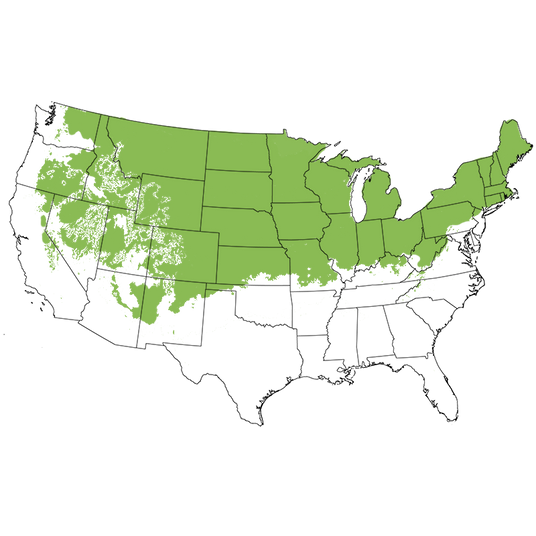
Growing Zones
Four-Season Amur Chokeberry Wildlife Tree
- Great Wildlife Tree
- Many Wonderful Ornamental Features
- Decorative Bark With Year-Round Interest
- Fragrant, White Spring Flowers
- Edible Black Fruits Feeds Local Birds
- Use the Berries to Craft Jam or Jelly
- Leaves Turn Yellow in Fall and Drop Cleanly for Easy Fall Clean-up
- Hardy and Adaptable Deciduous Tree
Nicknamed the Manchurian Cherry, we’re pleased to grow Amur Chokecherry (Prunus maackii) for sale. This mid-sized tree offers year-round visual interest.
This is a flowering and fruiting smaller tree for colder regions. It makes a great choice for a specimen in a bird-friendly landscape or informal food forest.
You’ll welcome spring with a wonderful, fragrant flower display of drooping clusters. Delicate 3-inch racemes of pristine, white blossoms herald the new season. They'll entice butterflies and pollinators to collect the nectar.
Birds nest in the well-balanced branches of this round-headed tree. It delivers a symmetrical look, but has an open and airy feeling that works well in naturalized landscapes.
Those pretty, white flowers transition to small, red drupes that transition to black as they ripen in July. They are edible, and - with sugar - can be used in tasty jams and jellies.
Of course, you’ll need to race the hungry birds for your share! The birds will flock to feast upon the fruit in summer.
Delightful, light green foliage covers the tree for summer, and in many years develops shades of yellow for fall color. The leaves typically drop quickly for easy fall clean-up.
However, of all the benefits of this remarkable tree, the bark is perhaps the most beloved. Prunus maackii has amazing bark on older trunks as they enlarge.
Similar to a Birch tree, the outer bark peels back in thin, paper-like sheets in a stunning display. Amur Chokecherry's attractive bark peels to reveal various shades of bronze, amber, copper and orange.
The unique bark is especially welcome during the winter months, when it infuses color into the barren landscape. Plant it front and center where you’ll enjoy it all year.
Truly a tree for all seasons, Amur Chokecherry will bring you interest and enjoyment for years to come. Order yours today!
How to Use Amur Chokecherry in the Landscape
Amur Chokecherry can be grown as a low-maintenance large shrub or medium tree with some great ornamental qualities. Try it as a specimen tree near your patio, in your courtyard or use several in a sunny side yard.
Spacing 10 feet on center to create a large-scale privacy screening. Measure from the trunk of one to the trunk of the next.
Highlight its multi-seasonal interest of this smaller tree by planting in natural groups. Use 3, 5 or 7 of them and vary the distance between trees from 12 - 20 feet for the most natural look.
Enjoy the early flowers, fruit and interesting bark in an informal grouping at the edge of a prairie. Include with Chickasaw Plum and Eastern Red Cedar to bring birds and support wildlife.
#ProPlantTips for Care
Plant in either full sun, or partial shade. It tolerates many soils types and pH levels, but the soil must be well-drained. Provide a moderate amount of water on a regular basis. Moisture during the growing season will keep your plant stress free during periods of drought.
Prune in mid-summer as needed to open the canopy to sunlight and air flow. It's a hardy tree that tolerates cold, drought and salt conditions.
Enjoy the white flowers in large clusters and give your local wildlife an important food source with the small reddish fruits. Study the interesting, peeling and multicolored bark as the trunk of the plants age.
Order the Amur Chokecherry today!

